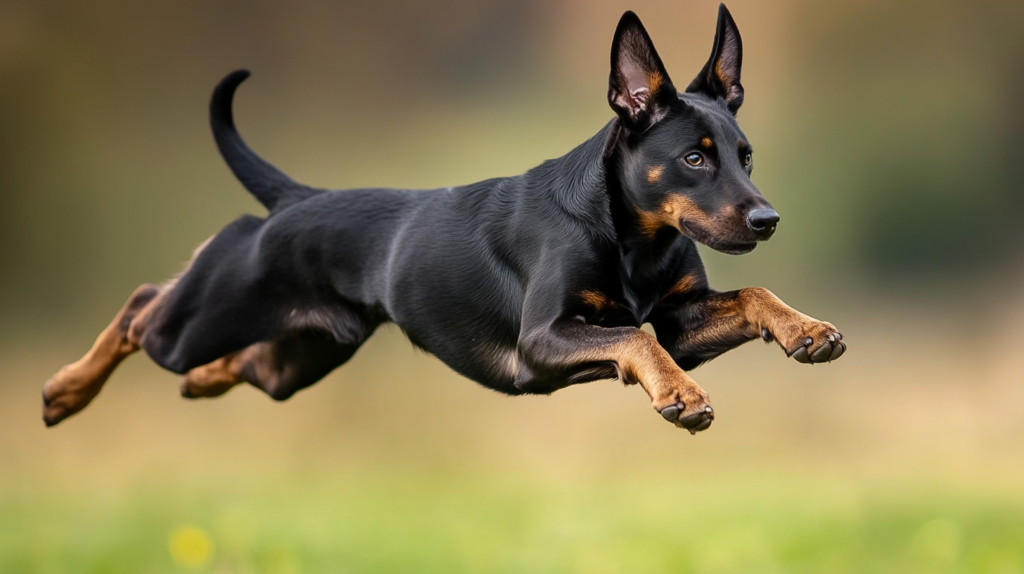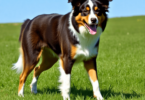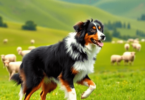Size, Weight, and Physical Characteristics of Australian Kelpies
The Australian Kelpie has a fascinating history rooted in the late 1800s. Developed from British collies crossed with various breeds, these dogs were specifically bred for effective herding without supervision. Their agility and intelligence made them indispensable on farms, leading to their popularity across Australia and beyond.
Understanding the size & physical characteristics of Kelpies is crucial for potential owners looking to welcome this energetic breed into their homes. Here are some key points to consider:
- Size: Kelpies typically stand between 39 to 51 cm (15 to 20 inches) tall at the shoulder.
- Weight: They usually weigh around 13 to 19 kg (29 to 42 lbs), influenced by factors like diet, exercise, and overall health.
- Physical Appearance: Their athletic build allows them to excel in herding tasks while also embodying a sleek and agile silhouette.
Being informed about the Kelpie’s physical traits helps in assessing whether this high-energy dog aligns with your lifestyle. Understanding these characteristics aids in making an educated choice for a lifelong companion.
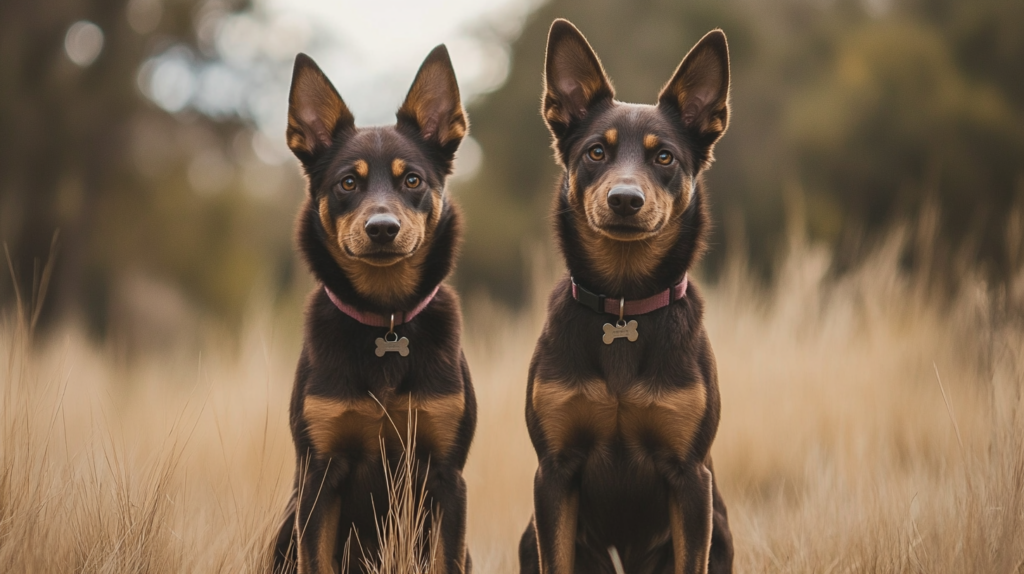
1. Size and Weight of the Australian Kelpie
The Australian Kelpie is a striking medium-sized dog that boasts an athletic build, making it well-suited for its original purpose as a herding breed. Understanding the size and weight of this lively companion is crucial for any prospective owner.
Standard Height Range
Kelpies typically stand at a height between 39 to 51 cm (15 to 20 inches) at the shoulder. This height can vary based on several factors:
- Males: Generally taller and more robust, standing between 46 to 51 cm.
- Females: Slightly shorter, with a typical range of 39 to 46 cm.
This variation in height can influence their roles in herding tasks. Taller Kelpies may have an advantage in certain working situations, while smaller ones might be nimbler.
Typical Weight Range
When it comes to weight, Australian Kelpies generally fall within a range of 13 to 19 kg (29 to 42 lbs). Various factors contribute to these weight differences:
- Diet: A balanced diet tailored to their age, size, and activity level is essential.
- Exercise: Regular physical activity helps maintain a healthy weight. Kelpies thrive on exercise due to their energetic nature.
Maintaining an optimal weight not only enhances performance in herding activities but also promotes overall health and longevity.
Kelpie Growth Chart and Stages
The growth of an Australian Kelpie progresses through distinct stages from puppyhood to adulthood. Here’s a closer look at this timeline:
Puppyhood (0-6 months)
- Rapid growth occurs during this stage.
- Teething begins around 3 months, often causing discomfort which can lead to increased puppy biting behaviors.
Adolescence (6 months – 1 year)
- Slower growth rate.
- Sexual maturity typically reached by 6-12 months, depending on gender.
Adulthood (1 year and beyond)
- Full height achieved around 12 months, though some may continue filling out until they are about 2 years old.
Key Milestones in Growth
Understanding the various stages of growth helps owners prepare for their dog’s needs:
- Teething Phase (3-6 months): Puppies may chew more vigorously; providing appropriate chew toys can alleviate discomfort.
- Socialization Window (8 weeks – 16 weeks): Essential for developing temperament; exposure to different environments, people, and other pets is crucial during this period.
- Training Period (4 months – 1 year): This is an ideal time for obedience training; Kelpies are highly intelligent and eager learners. Ensuring they receive sufficient stimulation and exercise during this phase can help channel their energy positively.
- Physical Maturity (1 year): By this age, most Kelpies have reached their full height.
2. Physical Characteristics of the Australian Kelpie
The Australian Kelpie has a strong and athletic build, perfectly suited for the demanding job of herding. With a well-proportioned body, Kelpies are built for agility and endurance, allowing them to move easily through rough terrains and effectively manage livestock. This breed thrives on physical activity, making their sturdy appearance not only visually appealing but also practical.
Unique Features Defining Kelpies
Several distinctive traits characterize the Kelpie breed appearance:
- Ears: Kelpies have upright ears that can be pointed or slightly rounded. These attentive ears enhance their hearing abilities, which is crucial for quickly responding to commands or sounds during herding.
- Eyes: Their expressive eyes can be brown or hazel, often showing an intelligent and alert look. This keen expression reflects their high energy levels and eagerness to engage with their surroundings.
When compared to other herding breeds like the Border Collie or Australian Shepherd, Kelpies stand out because of their smaller size and less prominent features. While other herders may have fluffier coats or more intricate markings, Kelpies have a sleek appearance that highlights their athleticism and purpose.
Coat Characteristics, Colors, and Types in Kelpies
An important aspect of the Australian Kelpie’s physical appearance is its coat. The breed usually has a short double coat, which serves multiple purposes:
- Protection: The outer layer repels moisture and dirt while the undercoat provides insulation against varying weather conditions.
- Maintenance: Short coats require less grooming than longer-haired breeds, making them ideal for active households.
Kelpies come in a variety of colors that add to their charm:
Common Colors:
- Black
- Chocolate
- Red
- Smoky Blue
- Fawn
- Black and Tan
This variety allows potential owners to choose a Kelpie that matches their aesthetic preferences while understanding the breed’s practical needs.
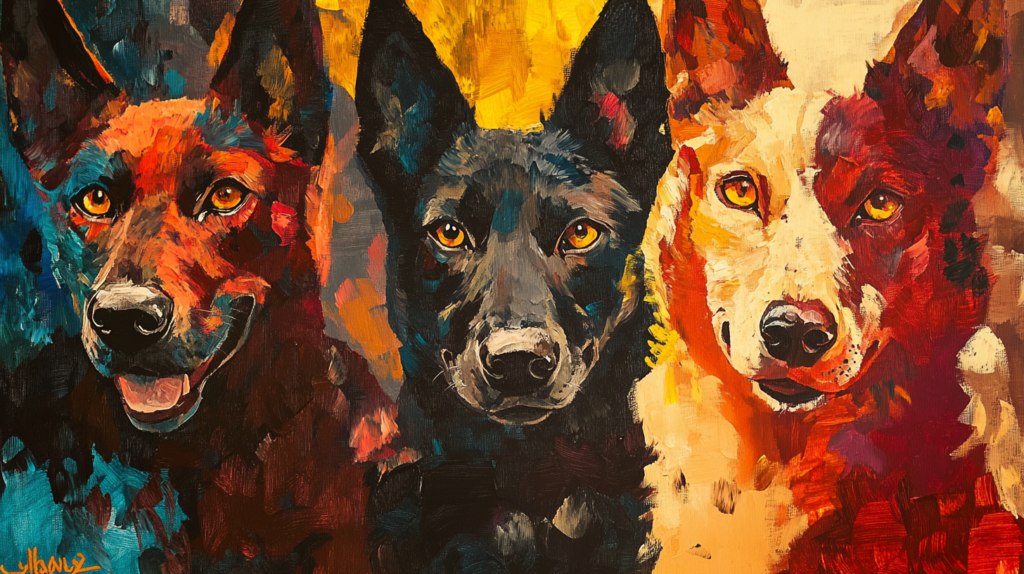
Understanding Coat Types
The difference between short and double coat types is important when considering an Australian Kelpie.
Short Coat:
- Sleek and lies flat against the body.
- Easily manageable with minimal shedding.
- Ideal for warmer climates due to its breathability.
Double Coat:
- Comprises a soft undercoat and tougher outer layer.
- Provides excellent insulation during colder months.
- May involve seasonal shedding; regular grooming helps control loose fur.
In terms of maintenance, both coat types offer benefits but require different care routines. Regular brushing helps keep their fur healthy while also promoting bonding between dog and owner.
Summary of Physical Characteristics
The combination of an athletic body structure, unique defining features like ears and eyes, along with varied coat characteristics makes the Australian Kelpie a standout breed. Their distinct physical attributes not only enhance their herding efficiency but also contribute to their appeal as family companions.
Understanding these traits empowers potential owners to make informed decisions about adopting this vibrant breed. A Kelpie’s physical characteristics play a crucial role in ensuring they thrive in active environments while receiving ample mental stimulation through training and playtime activities.
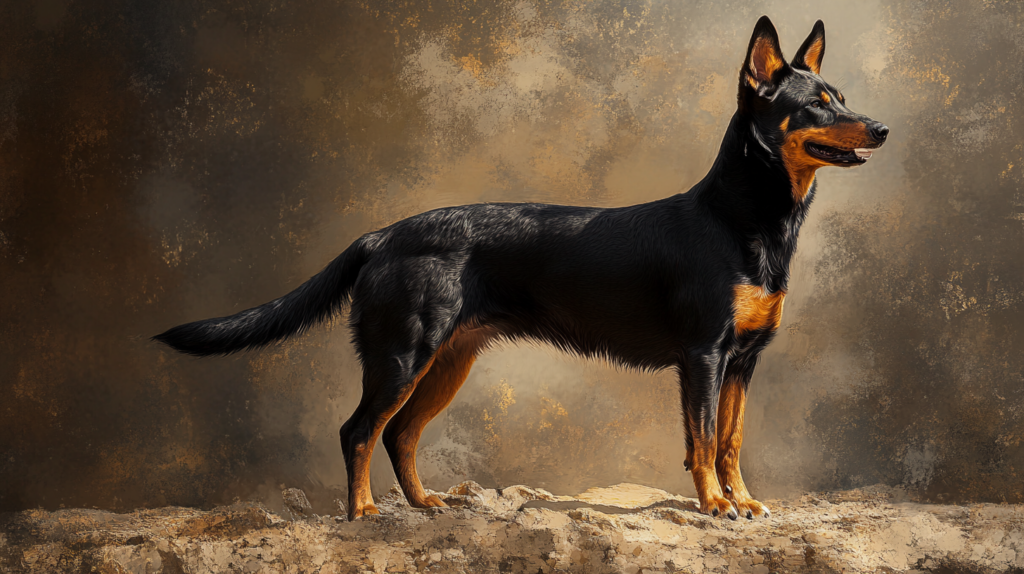
3. Breed Standards and Variations in Kelpies
The Australian Kelpie is not just a single breed; it comprises two main varieties that showcase distinct characteristics: the Working Kelpie and the Show Kelpie. Understanding these differences helps potential owners appreciate the diversity within the breed.
Differences in Size and Appearance
Working Kelpie
- Typically more athletic and lean, designed for endurance and agility.
- Height ranges from 39 to 51 cm (15 to 20 inches) at the shoulder.
- Weight generally falls between 13 to 19 kg (29 to 42 lbs).
Show Kelpie
- Often slightly heavier with a more robust build, emphasizing a pleasing appearance over working ability.
- Height can be similar but may lean towards the higher end of the range.
- Weight may also be on the heavier side, reflecting their thicker coats and broader frames.
These subtle yet significant variations highlight how purpose influences size and physical traits. Working Kelpies are bred for their herding prowess, while Show Kelpies focus on conforming to aesthetic ideals outlined by breed standards.

Breed Standards Set by Major Kennel Clubs for Kelpies
Recognition of Australian Kelpies by kennel clubs ensures that breeders adhere to specific standards, maintaining the integrity of this remarkable breed.
United Kennel Club (UKC)
- The UKC recognizes both Working and Show Kelpies.
- Emphasizes functionality alongside appearance, allowing for slight variations in size depending on their intended use.
Fédération Cynologique Internationale (FCI)
- Focuses primarily on the standardization of physical traits across breeds globally.
- Sets guidelines that ensure Kelpies maintain their unique characteristics without compromising their working abilities.
Detailed Overview of Breed Standards
Both organizations outline specific criteria regarding size, weight, and physical features. Here’s a closer look at what they highlight:
Size Requirements
Standard heights for males typically range from 46 to 51 cm, while females stand between 39 to 46 cm.
Weight Guidelines
The ideal weight reflects an athletic build without being overweight or underweight.
Coat Quality
A short double coat is preferred for both varieties, contributing to their durability in various weather conditions.
Color Patterns
A variety of colors is accepted, including black, red, chocolate, fawn, blue, and combinations like black and tan or red and tan.
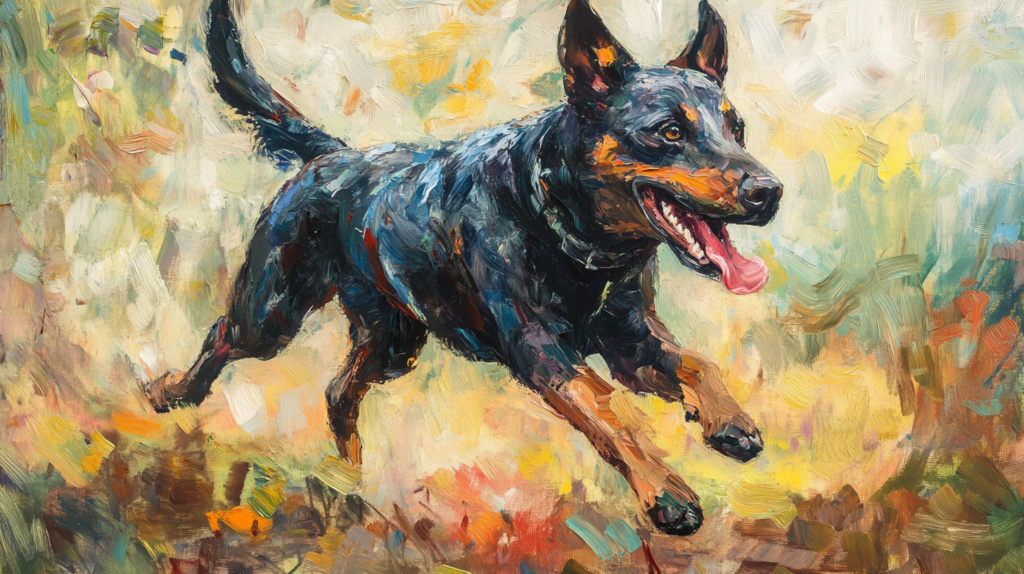
Recognizing Breed Characteristics
In addition to size standards, both kennel clubs stress certain defining traits:
- Eyes: Expressive with an alert gaze reflecting intelligence.
- Ears: Prick or semi-prick ears are preferred as they enhance their herding capabilities.
- Tail: Moderately long with a slight curve is ideal; it aids balance during swift movements while working.
Understanding the differences between Working and Show Kelpies provides essential context for potential owners. Each variety serves its purpose while embodying distinctive traits aligned with breeding goals. Knowledge of breed standards from major kennel clubs enriches this understanding further. Whether drawn to the energetic agility of a Working Kelpie or the charming aesthetics of a Show Kelpie, recognizing these variations helps inform choices when considering adding one of these remarkable dogs to your life.

Conclusion: Making an Informed Decision on Adopting or Purchasing an Australian Kelpie as Your Next Companion Dog Breed!
Understanding the size and physical characteristics of the Australian Kelpie is essential for potential owners. This breed, known for its intelligence, energy, and loyalty, thrives in active households.
Key considerations include:
- Size & Physical Characteristics: With a height range of 39 to 51 cm and a weight between 13 to 19 kg, knowing these Kelpie dog measurements helps in preparing your home and lifestyle.
- Training and Socialization Needs: Kelpies require consistent training and mental stimulation to become well-rounded companions. Their athletic build demands regular exercise, making them ideal for those who enjoy outdoor activities.
- Breed Appearance: Familiarizing yourself with the Australian Kelpie breed standard can ensure you select a healthy pup that meets your expectations regarding size and coat type.
This breed’s vibrant personality makes it a joy to own, but potential owners must be ready to invest time in proper training and socialization. Recognizing these aspects can lead to a fulfilling relationship with your future furry friend.

FAQs (Frequently Asked Questions)
What is the typical size and weight range of an Australian Kelpie?
Australian Kelpies typically stand between 39 to 51 cm in height. Their weight ranges from 13 to 19 kg, with variations influenced by factors such as diet and exercise.
How does the growth chart of an Australian Kelpie look?
The growth chart for an Australian Kelpie outlines key milestones from puppyhood to adulthood, including phases like teething and sexual maturity. Understanding these stages helps owners anticipate their dog’s development.
What are the physical characteristics of an Australian Kelpie?
Australian Kelpies have an athletic build that is essential for their herding tasks. They possess unique features such as distinct ears and eyes that set them apart from other herding breeds. Their coat can be short or double, with colors including black, chocolate, and red.
What are the differences between working Kelpies and show Kelpies?
Working Kelpies and show Kelpies differ in size and appearance. Working Kelpies are bred primarily for their herding capabilities, while show Kelpies are bred according to specific breed standards set by kennel clubs like the United Kennel Club.
What breed standards exist for Australian Kelpies?
Breed standards for Australian Kelpies have been established by major kennel clubs such as the United Kennel Club and Fédération Cynologique International. These standards outline acceptable sizes, appearances, and other characteristics important for breed recognition.
Why is it important to understand the size and physical characteristics of an Australian Kelpie before adopting one?
Understanding the size and physical characteristics of an Australian Kelpie is crucial for potential owners as it helps them assess whether this intelligent, energetic, and loyal breed will fit into their active household. Proper training, socialization, and mental stimulation are necessary for these dogs to thrive as well-rounded family companions.


